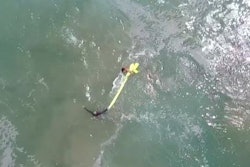
Drones are equipped with a single camera and inertia measurement unit, an electronic device which measures the physical forces acting upon them. With these measurement devices, the drones communicate with one another using a cooperative localization scheme that allows each vehicle to benefit from measurements acquired by the other vehicles. This ensures that the object being carried is done evenly and will not cause damage. Using this system, they can reach speeds of 4.2 meters per second while carrying objects.
“A more advanced form of collective behavior is required for tasks that simply cannot be accomplished by individuals, but can be solved by cooperation and coordination. Each robot needs to interact with the payload and also accommodate the rigid constraints introduced between the different robots. The transportation task does not depend on cable connections, but rather on a rigid connection between the vehicles and the load. The rigid connection is preferable in constrained environments where physical constraints do not allow the use of suspended cables. Our solution is simple and inexpensive," Giuseppe Loianno, a doctor of computer and automatic engineering and lead author of the research, told Digital Trends.
To read the full original article, please click here.















